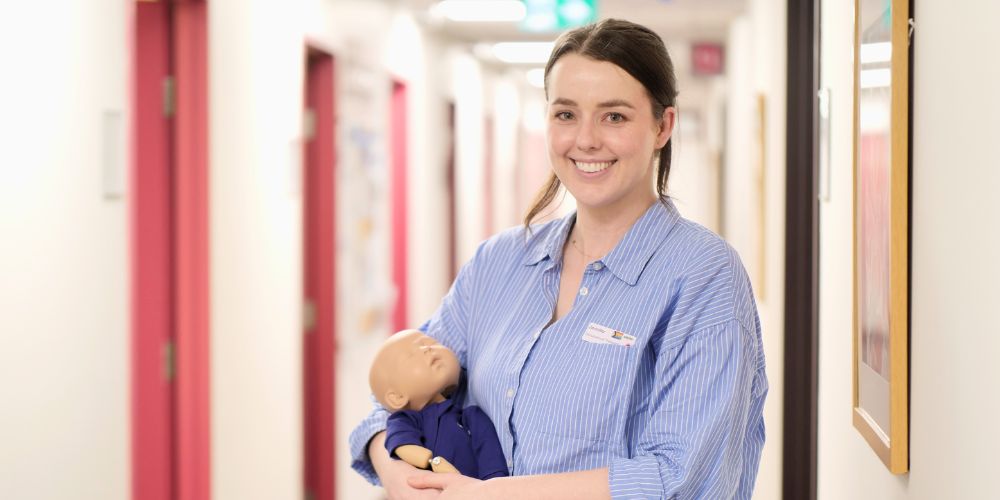
The Women’s is investing in new ways to support women with disability. First-time mum Blue Van De Cruze says the Women with Individual Needs (WIN) Clinic helped increase her confidence and independence.
Blue, who has epilepsy and narcolepsy, felt a little anxious during her pregnancy with baby Zeb.
Her neurological conditions can lead to episodes that resemble a loss of consciousness or control.
“My seizures are usually controlled really well,” Blue says.
“But then I fell pregnant and I've had to make some changes to medication.
“During pregnancy, hormonal changes can feel like a roller coaster ride and everything is suddenly different.”
Blue was worried that this might put her baby at risk.
“What if I experienced an episode while breastfeeding or changing the nappy?” Blue recalls thinking. “This could seriously put my baby at risk, and it worried me.”
Blue was a patient of our WIN Clinic, the only specialist pregnancy clinic for people with disability in Australia.

The clinic works closely with specialists from allied-health disciplines, and Blue was quickly connected with Jennifer Curtis.
Jennifer is a senior occupational therapist working with adults at the Women’s.
“It’s a new role, and we are filling a big service gap for pregnant women with disability,” Jennifer says.
The goal of occupational therapy is to help people develop greater independence and improve their quality of life. It addresses personal, environmental, and occupational factors that impact on how people engage in daily activities and life roles, such as being a mother.
What sounds quite abstract is practical and hands-on work. It can range from looking at how to lift a baby from a pram into a car, how to feed the little one, or how to manage bathtime.
“There is not a one-size-fits-all solution. Every woman coming through the service has different needs, so we develop an individual plan and response,” Jennifer says.
Blue said in her first session with Jennifer, they talked about her day-to-day life before pregnancy, and her main concerns about bringing her baby home.
“It was really helpful to speak about the layout of my house and the fact that I have a lot of stairs.
“Jennifer helped me put together a map to think about potential sticking points for bringing baby home.”
Then, in the next session, Blue and her partner Dom got to the practical exercises, using a weighted doll that felt like a real baby.
“With this doll, we could test a baby carrier and simulate what would happen if I momentarily lost control – and how to make this situation safe with baby still strapped on to me,” Blue says.
She and Dom also got to bath the doll, using an attachment for the baby doll to securely lie in.
“Again, this device gave me confidence that my baby would be safe should I experience a seizure,” Blue says.
“The sessions with Jennifer have been very helpful to figure out what's risky and what's not. I felt as prepared as I could be.”